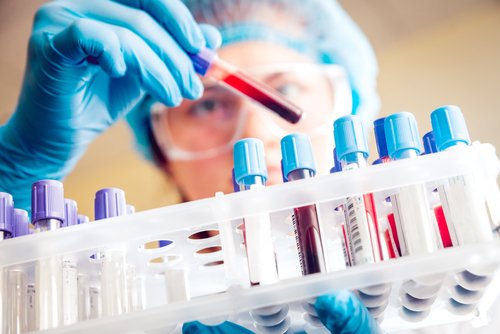The virus responsible for the COVID-19 pandemic had a toehold in more states across the U.S. earlier than we realized, according to a new study from scientists participating in the All of Us genomics research program.
In addition to clarifying our view of how the virus spread across the country, these findings highlight the value of large-scale, ongoing research studies — not only for their planned scientific goals, but also for unexpected needs in public health and other areas.
All of Us is a research effort backed by the National Institutes of Health aiming to sequence the genomes of 1 million Americans, in order to create a diverse repository of genetic, clinical, and other data. Launched several years ago, scientists around the country have been enrolling participants at a steady clip; so far, 278,000 people have completed the process, which involves giving blood samples.

It was some of those blood samples — specifically, those collected in the first quarter of 2020 — that intrigued scientists seeking to learn more about the path of the virus. They decided to analyze more than 24,000 blood samples collected between January 2 and March 18 from study participants in all 50 states, looking this time not for genome data but for SARS-CoV-2 antibodies that would indicate virus exposure at least two weeks prior to sample collection. To avoid errors, scientists used two different antibody tests and only considered a sample positive if both tests reported a positive result.
Before March 18, most known cases of COVID-19 in the U.S. had occurred in the New York metropolitan area or around Seattle. If those two cities had indeed been the only points of virus transmission at that time, All of Us participants from any other region should not have had antibodies in their blood. But nine samples among the thousands tested came back positive, and they were all from areas well beyond New York and Seattle: Illinois, Massachusetts, Mississippi, Pennsylvania, and Wisconsin. Seven of those samples were collected prior to the first reported COVID-19 case in those states, indicating that the virus had likely been circulating earlier than we knew at the time. The first positive samples were collected on January 7 in Illinois and on January 8 in Massachusetts. Based on typical immune response timelines, that suggests that both states had COVID-19 transmission by late December 2019.
It is possible that these samples came from people who were infected while traveling outside of their states. But this new data corroborates earlier research from scientists at the Centers for Disease Control and Prevention indicating that the virus began spreading across the U.S. long before public health experts rolled out diagnostic tests to track it.

“Antibody testing of blood samples helps us better understand the spread of SARS-CoV-2 in the U.S. in the early days of the U.S. epidemic, when testing was restricted and public health officials could not see that the virus had already spread outside of recognized initial points of entry,” said Keri Althoff, an epidemiologist at the Johns Hopkins Bloomberg School of Public Health and a co-author of the study, in the press release.
Beyond the obvious epidemiological value of a study that sheds light on how SARS-CoV-2 marched across the country, these findings also clearly demonstrate the importance of large-scale biomedical research studies. Without the All of Us program, scientists would not have had this supply of tens of thousands of blood samples, that had been carefully collected and was available for broad use because of the expansive type of consent that had been given by participants. The government funding that made the All of Us program possible is an investment that clearly can support many research queries — such as tracking a pandemic — that scientists never imagined when they launched the program.
“This study … highlights the real-world value of longitudinal research in understanding dynamics of emerging diseases like COVID-19,” said Josh Denny, CEO of All of Us and another author of the study. “Our participants come from diverse communities across the U.S. and give generously of themselves to drive a wide range of biomedical discoveries, which are vital for informing public health strategies and preparedness.”

















